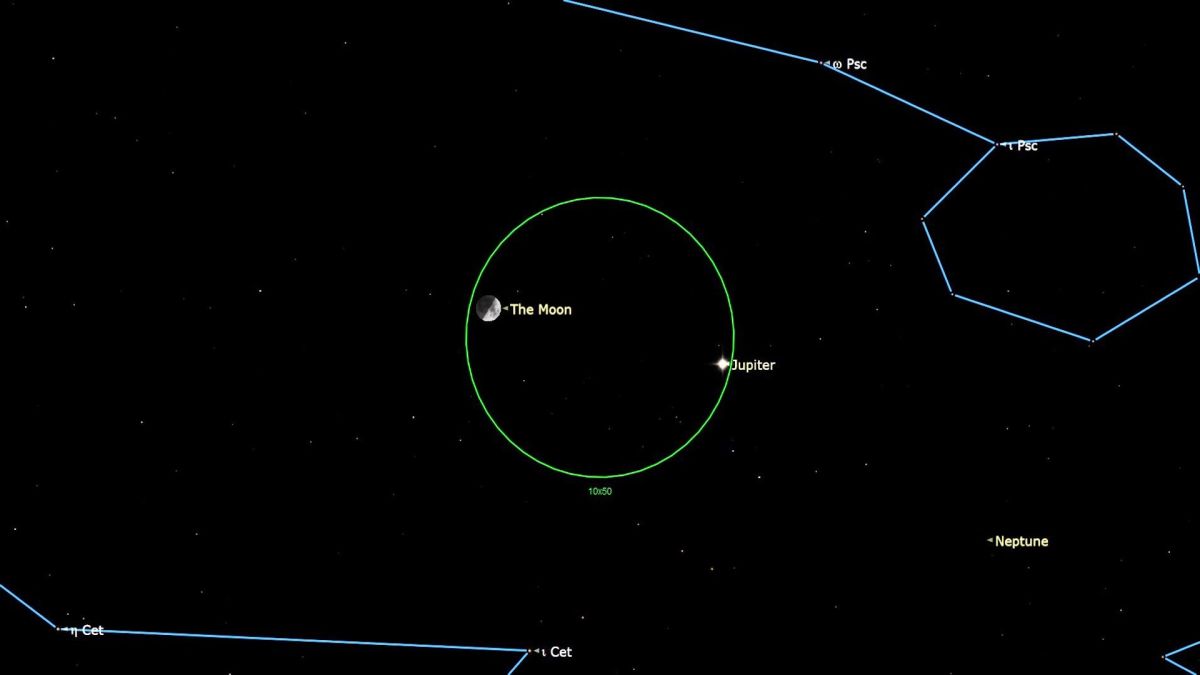On Thursday evening (Dec. 29), the moon will reach its first quarter phase; this will be the last time the moon reaches one of its four major phases in 2022.
Since the new moon on Dec. 23, the lunar surface has gradually been becoming more illuminated, and tonight, it’ll appear to be half-lit. The next phase of the moon will be the full moon, which will occur on Jan. 6, 2023.
The final first quarter moon will be joined by a special guest tonight: Jupiter, the solar system’s largest planet. Both will be visible in the southern skies in the constellation Pisces and should be close enough together to see with a pair of binoculars (though will be too far apart to see with a telescope). Jupiter and the moon will be in conjunction, meaning they share the same right ascension, the celestial equivalent of longitude.
Related: The Christmas night sky 2022: The planets pay a holiday visit
Though the first quarter moon will rise around noon, it’ll become most prominent after dusk, when the sky reaches darkness. In New York City, darkness arrives at 4:55 p.m. EST (2155 GMT), when the moon will be 47 degrees above the southeastern horizon. (You can estimate degrees above the horizon using your fist — when you hold your fist out at arm’s length, the size of your fist will roughly equate to 10 degrees). The moon will continue rising to 49 degrees, its highest point in the sky, which it will reach at 5:56 pm EST (2256). The moon will remain visible for several more hours, setting around midnight.
At the same time, the moon and Jupiter will reach conjunction, the point where they share the same right ascension. They’ll also appear to be at their closest point together in the night sky, called an appulse. Look for Jupiter to the northwest of the moon — the two celestial bodies will be separated by 2 degrees and 18 minutes.
Want to photograph this phase of the moon with Jupiter nearby? Take a scroll through our guides for the best cameras for astrophotography and the best lenses for astrophotography , which are helpful for both novices and pros. Then check out our guide explaining how to photograph the moon , which provides helpful tips to up your lunar photography game. And if photography isn’t your jam, that’s all right — you can simply enjoy skywatching via the best binoculars and the best telescopes .
Editor’s note: If you snap a photo of Jupiter near the first quarter moon and would like to share it with Space.com’s readers, send your photo(s), comments, and your name and location to spacephotos@space.com.
Follow Stefanie Waldek on Twitter @StefanieWaldek (opens in new tab) . Follow us on Twitter @Spacedotcom (opens in new tab) and on Facebook (opens in new tab) .
